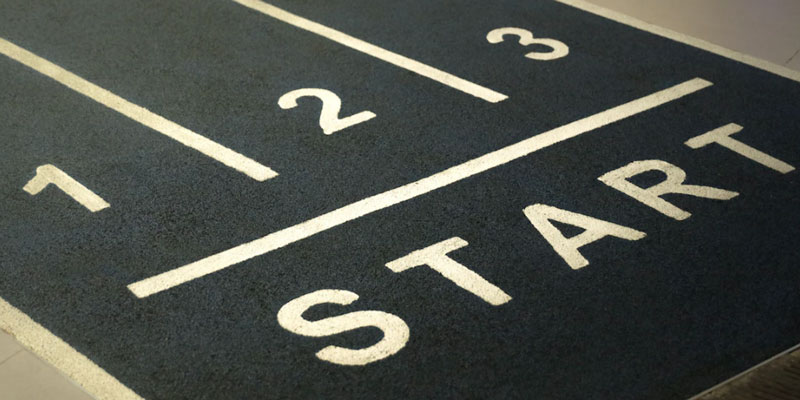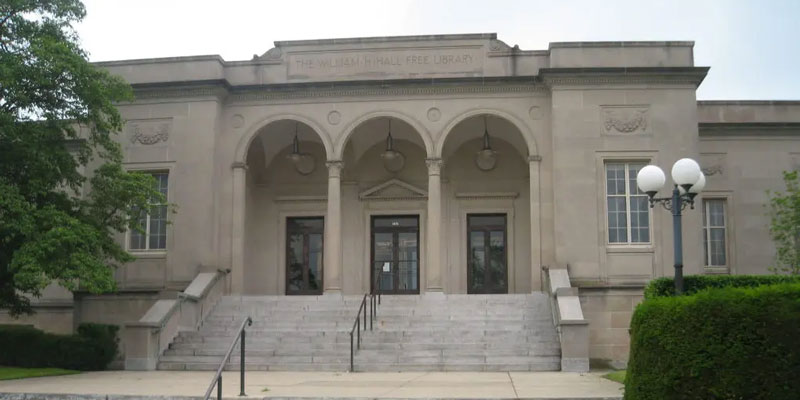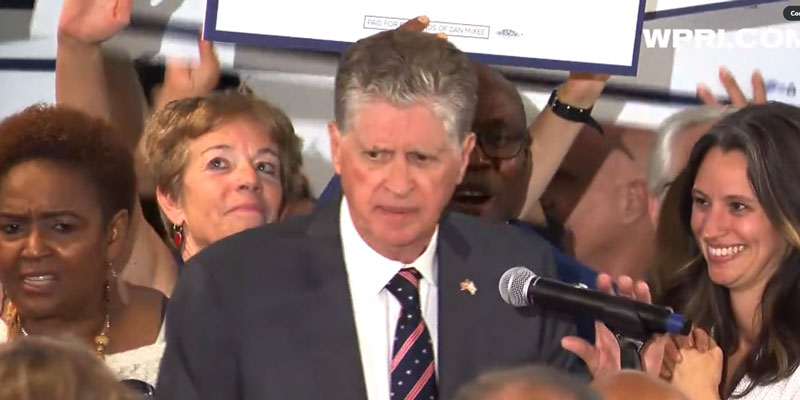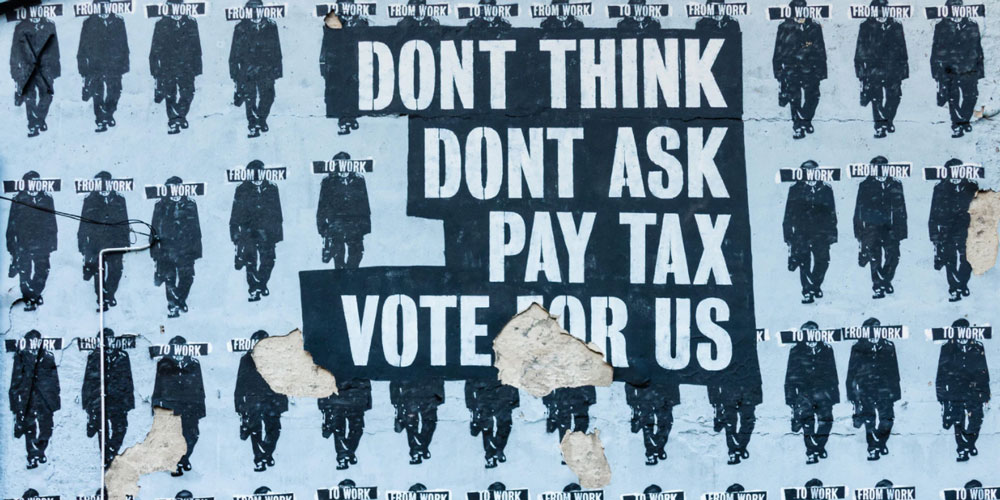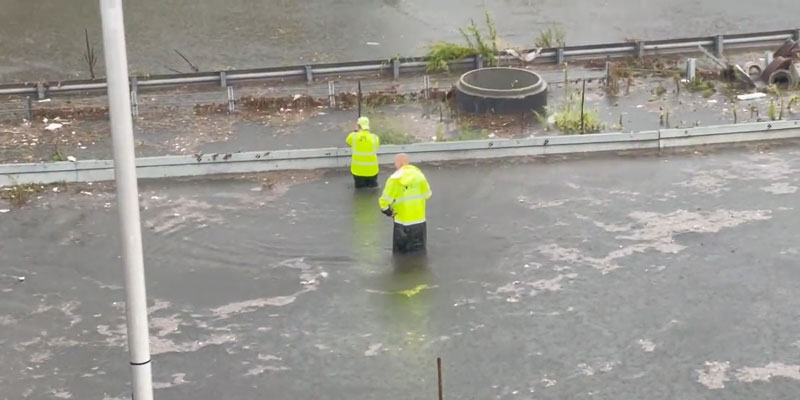On WNRI 1380 AM/95.1 FM, John DePetro and Justin Katz discuss:
- McKee and Foulkes
- McKee and Kalus
- Kalus and DeSantis
- Martha’s Vineyard and immigration
- The media and the Democrats
- Progressives and the election
Featured image by Setyaki Irham on Unsplash.
[Open full post]The links are profuse and not worth culling, but on social media, progressive fascists are agitating to disrupt and have cancelled an event the Independent Women’s Forum is presenting at the Cranston Public Library tonight. The library released a statement that states the legal facts, but perhaps with a bit too much hesitance for the point to be clear:
The Cranston Public Library has a longstanding practice of allowing private groups to book and use library meeting spaces. According to the American Library Association, “publicly funded libraries are not obligated to provide meeting room space to the public. If libraries choose to do so, such spaces are considered designated public forums, and legal precedent holds that libraries may not exclude any group based on the subject matter to be discussed or the ideas for which the group advocates.”
To put a finer point on it, use of a public space is a civil right recognized under the United States Constitution.
What we’re seeing is an important reminder that woke progressives do not value civil rights. If you disagree with them, you have no rights. In short, they are the fascists we’ve been warned about.
Their claim of “tolerance” is vanishingly thin, because they insist that it does not apply when it comes to any matter on which they declare tolerance intolerable. As they take a controlling hand in government, we can be absolutely sure that they will persecute, imprison, and destroy anybody who disagrees with them to prominently.
[Open full post]In American folk legend, blues musicians could stroll out on a country road and meet the devil at the crossroads, where they could trade their souls for musical mastery and all the rewards that come with it.
Going back to Christopher Marlowe’s play, The Death of Doctor Faustus, and probably before, the primary moral lesson of such tales is that the bill always comes due. Someday, you’ll be watching that last perk of success move away dissipate in the fog, and all that remains will be the obligation of paying for it for the rest of eternity.
Naturally, these stories lose much of their power as people increasingly deny that their immortal souls exist. No bill comes due if you’re only deteriorating matter when all is said and done. The light goes out either way, and darkness is darkness. There is, however, another cost to the devil’s bargain, and Rhode Island’s governor, Dan McKee, put it on full display on election night:
#ICYMI: An interesting moment as Democratic challenger Helena Foulkes tried to call Gov. Dan McKee during his speech to supporters.https://t.co/0MI0vMynyF pic.twitter.com/7VWrMa9RNN
— WPRI 12 (@wpri12) September 14, 2022
When one of his opponents in the primary — Helena Foulkes, a highly accomplished woman — called to concede just as McKee began speaking into the microphone to declare victory, McKee shot an annoyed look at his staffer — Eva Mancuso, herself an accomplished woman — and waved her away, saying, “hang up on them.”
The moment was incredibly telling. It should have been an easy win for him: take the call, graciously accept the concession and compliment the opponent on a race well run, hang up, and explain to your audience that Democrats can, should, and must come together to achieve their goals. Instead, he belittled his opponent and his staffer, both, and in the emotional moment showed his true character.
Why would he do that? My interpretation is that he felt like this was his moment, and here was this troublesome lady, who’d had the gall to compete with him and bring up unflattering facts as part of the campaign, trying to edge in on his spotlight.
The thing is: It wasn’t his moment. It was the devil’s moment. The success was not his own. The critical factor for his victory was selling his soul (and giving away taxpayer money) to special interests, most notably Rhode Island’s extremely powerful labor unions.
The other striking image of election day was McKee standing with Patrick Crowley — arguably the most vicious radical union activist in the state for the past twenty years — who was holding a McKee sign outside of a polling place.
.@GovDanMcKee is out here in Rumford with supporters, including @PatCrowley401 and @Steph_DeSilva and @mayorbobdasilva. He says he wants to keep RI’s momentum going pic.twitter.com/n45d3cUyPM
— Brian Amaral (@bamaral44) September 13, 2022
Until very recently, McKee was a target of the likes of Crowley based on his introduction of mayoral academy charter schools when he was mayor of Cumberland. The unions, especially Crowley’s National Education Association, despised that move. But that was before McKee went out to the crossroads.
As if the divine power wishes to put a fine point on this observation, Foulkes appears to have won the election-day vote. With a single precinct left to report (in Providence, where third-place Nellie Gorbea has the lead), 26,605 people went out to the polls to vote for Foulkes, but only 26,403 did so for McKee. Without the blessing of the labor unions and the get-out-the-vote and ballot harvesting benefits that come with it, McKee wouldn’t have won.
He’d be the guy who barely edged out a radical kid with no experience or qualifications in the race for lieutenant governor and then became governor only because his predecessor left the job to go national. From his perspective, that moment on primary night was huge validation for him… except it wasn’t. Getting into a position where your soul is valuable enough to sell is not a success.
Rhode Islanders should expect McKee to get worse, not better, as he moves into the general election (against another accomplished woman, Ashley Kalus) and, if Rhode Island is unfortunate, back into a governor’s office that he will then think he deserves.
Featured image from WPRI video on Twitter.
[Open full post]Remember when nobody cared that the Biden administration was dropping off illegal immigrants across the country in the middle of the night, including in Rhode Island?
You don’t have to look very hard to see that the Democrats and mainstream media are playing you.
[Open full post]On WNRI 1380 AM/95.1 FM, John DePetro and Justin Katz discuss:
- Union-owned officials rally in Pawtucket
- The governor insults CVS
- The mayor casts shade on the election
- Pelosi in town
- Gorbea skirts election law
Featured image by Pawel Czerwinski on Unsplash.
[Open full post]The Rhode Island Saga, Post 3
Having introduced the heroes of our salvation story for Rhode Island, we must now observe them more closely. They are young, yet, so the details of what they may become — what they should become — are hazy, but what we want to understand at the moment is the irreducible something that hints at their ability to overcome the specific challenges of our time.
In a business story, this could be an extraordinary inner drive, a particular talent, or a unique idea for a product or service (or talent for developing products or services). A political story has corollaries to all of these, but our heroes find themselves in such a squalid and corrupt setting that the irreducible something must be fundamental and profound. It must be a basic idea — a different way of answering the question, “What should we do?”
I propose that what sets our heroes apart and hints at their promise is an innate conviction that a community should pursue the optimum balance of cooperation and individual liberty, structured so that people can be as free as possible while having opportunities to cooperate as much as possible. In these broad, abstract terms, even the forces of local corruption might express agreement with this proposition, but their view is actually its inversion.
The conviction of Rhode Island’s status quo (which progressives work relentlessly to amplify) requires an a priori definition of cooperation as a deliberate act codified by setting the rules for everybody through a centralized power. Put in its best framing, their idea is that we all come together and determine what sort of society we want, and by a fair and equitable process, we write that into law. With this form of cooperation they pair a concept of individual liberty that accepts, even celebrates, differences in identity (which encompasses not only one’s innate qualities, but also one’s beliefs and actions, all of which are inextricably connected, in their view).
Thus, they’d say, do we achieve balance. Provided their identities do not prevent others’ expression of their own, then people are as free as they possibly can be within a system in which we’re maximally cooperating.
Our heroes sense, however, that underneath this positive-sounding vision is a dark lie promulgated under the manipulation of some unseen evil. Curiously, when the community comes together, some ideas for the sort of society we want are simply disallowed. Moreover, the allowance for individual liberty is entirely conditional. If your individual desires are politically helpful, they are encouraged; if they are indifferent to the objectives of the collective, they will be tolerated but easily lost as soon as they become politically inconvenient; if your beliefs contradict the needs of the political rulers, however, they forbidden, and if you won’t repudiate them, you’re not even human or deserving of basic protections.
Our heroes’ sense of right and wrong is very different. For them, cooperation does not require a formal agreement enforced by a central authority but is, rather, proven by action. Members of the community don’t have to agree on anything except to the degree required to interact for specific purposes. One person sells, while another buys, and their only necessary agreement is that the transaction is worthwhile. The civic society should be structured, therefore, to facilitate cooperation wherever possible and otherwise allow people their liberty.
This approach draws out a natural magic at the core of our being that expresses itself in two ways. First, although any two people might not cooperate on as many things, because everybody is pursuing his or her own desires and cooperating wherever possible, total cooperation increases. Second, when they cooperate in one area, people find that their other differences fade in importance.
And so, the heroes of the Rhode Island Saga grew up in their little cottage, under the care of the kindly couple, and with the conviction that something was off in the larger world, which held a suppressed, more-magical possibility. They matured with the years, and they watched as the comfortable and familiar fields around their cottage began to decay, as if The Evil was drawing the life out of them.
As life became more difficult, the boy and girl, now a young man and a young woman, had to begin taking responsibility for their family, so they ventured down into the Marketplace.
[Open full post]On WNRI 1380 AM/95.1 FM, John DePetro and Justin Katz discuss:
- A state that can’t handle rain
- A secretary and board that can’t handle elections
- A debater who can’t handle criticism
- A lieutenant governor who can’t handle debates
- A president who can’t handle disagreement
Featured image by Amanda Pitts on Twitter.
[Open full post]Today the most prominent themes among the flotsam on RI Twitter are hagiographic tweets about labor unions and reports about failing infrastructure in the Providence area with respect to water management. Folks, thank the unions for the flooding, because the expense they’ve imposed on infrastructure in Rhode Island is largely to blame. Ignoring this reality is among the central missions of our government and news media.
[Open full post]… if you see people citing the strange flash flooding in the Providence area and Rt. 95 as evidence of “climate change,” ask them whether the blame mightn’t more reasonably land on government officials’ poor management of the infrastructure under their authority.
[Open full post]The Rhode Island Saga, Post 2
When people begin thinking in a deliberate way about how to turn their ideas, capital, and effort into businesses (which they sometimes get around to years after they’ve started operations), I put the process in terms of a story.
The hero of the story is, obviously, the person or group of people who are beginning the business. This is not only because they are the clients with whom I’ve contracted, but also because the real hero is the underlying idea, and they are its human incarnation.
So, when I suggest that Rhode Island needs a hero, I don’t mean a political savior. That sort of thinking has helped to bring our state and the establishment’s political opposition to their current, undesirable positions. The way to start is with the idea or concept of the hero. What does the idea that would save Rhode Island look like?
If a person or group emerges to personify the ideal, great, but political reform, like product marketing, requires a positive something to sell. It isn’t enough to describe the villain. If all the story has is a villain, people stuck in the plot will have no choice but to endure or to flee. This condition describes Rhode Island as I’ve been experiencing it since I began paying attention a quarter century ago.
Mind you, the idea doesn’t have to be fully identified or developed, just yet. That will be a product of the process we’ll be going through on Anchor Rising (and beyond) as we move forward.
Picture the country boy and girl who live in the cottage shown in the featured image of this post. Let’s imagine them as biological siblings both adopted by the same kindly and hard-working couple on the outskirts of the kingdom. Somehow, deep in their very being, they know that life can be better — more magical — than their experiences suggest. Similarly, their parents — indeed, their entire village — can sense that something is special about these children.
Before we can set the story into motion, this is what we must define. What qualities set our heroes apart? What sorts of things do they do differently, even if only a little bit… a hint of something different or more?
Featured image from Shutterstock.
[Open full post]
